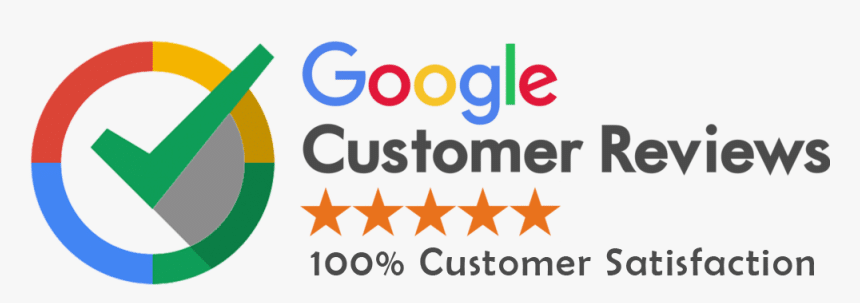Amazon is no longer just an e-commerce platform; it is one of the biggest product search engines in the world. Millions of users visit Amazon daily not to browse, but to buy. On the other hand, Google is the most used search engine globally, but its goal is different: it answers questions, navigates users to information, and provides diverse types of results, not just product listings. Understanding the key differences between Amazon SEO and Google SEO is important for anyone wanting to rank their product or content effectively on both platforms.

What is Amazon SEO?
Amazon SEO refers to the process of optimizing your product listings to appear higher in Amazon’s search results. The goal is to improve visibility and increase sales. Amazon uses its own algorithm (commonly referred to as A9) that determines which products appear first when someone searches on Amazon.
Amazon’s algorithm focuses mainly on three things:
- Relevance of the product listing to the searched keyword
- Performance of the product (click-through rate, conversion rate, sales history)
- Availability and fulfillment options (like Prime eligibility)
Unlike Google, which rewards a site for quality content and backlinks, Amazon rewards listings that convert well and lead to more sales.
What is Google SEO?
Google SEO is about optimizing websites and web pages so they appear higher in search engine results pages (SERPs) when users type in queries. Google uses complex algorithms that analyze factors such as:
- Quality of content
- Keyword usage and placement
- Backlinks from authoritative websites
- Mobile-friendliness and site speed
Google aims to show the most relevant and valuable information for each query. It’s informational, navigational, and sometimes transactional.
Key Differences Between Amazon SEO and Google SEO
Let’s explore the major differences that separate the two:
Search Intent
- Amazon: Users are looking to buy a product.
- Google: Users might want to learn, compare, navigate, or buy.
On Amazon, almost every search is commercial. The user is ready to make a purchase or is very close to doing so. On Google, only some searches are commercial. Others are informational, like “how to grow tomatoes” or “history of Dubai.”
Keyword Strategy
- Amazon: Focus is on short-tail and direct keywords like “Bluetooth speaker.”
- Google: Focus is on long-tail keywords and search phrases like “best Bluetooth speakers under 50 AED.”
Because Amazon users are closer to the buying stage, they use fewer words. In contrast, Google users may use more descriptive or question-based searches.
Ranking Factors
- Amazon:
- Conversion rate
- Sales history
- Product availability
- Reviews and ratings
- Pricing
- Fulfillment method (FBA/Prime)
- Google:
- Content quality
- Backlinks
- Website structure
- Page speed
- Mobile usability
Content Optimization
- Amazon:
- Product title
- Bullet points
- Product description
- Backend keywords
- Google:
- Page title
- Meta description
- Headers (H1, H2, etc.)
- Paragraph content
- Internal/external links
On Amazon, rich and detailed listings with accurate keywords improve product discoverability. On Google, engaging, useful content that earns links helps in ranking.
Impact of Images and A+ Content
- Amazon: High-quality images and enhanced content like A+ content (comparison charts, banners, infographics) can significantly impact conversions.
- Google: While images help, they are not primary ranking factors unless you are optimizing for Google Images.
Unique Features of Amazon SEO
A9 Algorithm
Amazon’s A9 algorithm is built to make sales. It shows products that are more likely to convert. If a product gets more clicks and sales, it will rank higher. The A9 algorithm considers:
- Historical sales data
- Pricing competitiveness
- Customer reviews and rating volume
- Stock availability
- Delivery speed and return rates
No Role of Backlinks
Unlike Google, Amazon doesn’t use backlinks as a ranking factor. You don’t need other websites to link to your product to improve its visibility. Instead, internal data such as conversion rate and customer satisfaction play a major role.
Importance of Reviews
Customer reviews influence both rankings and conversions. A product with more positive reviews is more likely to be bought, which indirectly boosts its SEO. Google reviews influence local search, but not to the same extent as Amazon product reviews.
External Traffic and Its Impact
While Amazon doesn’t officially list external traffic as a ranking factor, sellers who send traffic to Amazon through ads, social media, or email marketing often see an improvement in rankings. The idea is simple: more sales = higher rank. So, if external traffic results in conversions, Amazon considers the product valuable.
On Google, external traffic doesn’t help rankings unless it leads to backlinks or user engagement (like low bounce rate).
CTR vs. Conversion Rate
Google focuses more on click-through rate (CTR). If your meta title and description attract more clicks in search results, your page might rank higher over time.
Amazon focuses on conversion rate (CR). If your product sells after a user views it, it signals to Amazon that the listing is good. That’s why even the smallest listing detail matters.
Paid Ads vs Organic SEO
Both platforms offer advertising. But how they influence organic rankings differs:
- Amazon: Sponsored ads don’t directly boost organic rankings but the sales they bring do.
- Google: Google Ads are completely separate from SEO. They don’t impact organic rank.
Tools for SEO Optimization
For Amazon
- Helium 10
- Jungle Scout
- AMZ Tracker
- SellerApp
For Google
- SEMrush
- Ahrefs
- Google Search Console
- Ubersuggest
These tools help find the right keywords, analyze competition, and improve listings or web pages.
Example: Comparing Amazon vs Google for One Product
Let’s say you want to sell “wireless earbuds.”
Amazon Approach
- Product Title: “Wireless Bluetooth Earbuds with Charging Case”
- Backend Keywords: “wireless headphones, earbuds for gym, noise-cancelling”
- Focus on getting reviews, competitive pricing, fast shipping, and good images
Google Approach
- Blog Post Title: “Top 5 Wireless Earbuds Under AED 200 in UAE”
- Use long-tail keywords: “best wireless earbuds with long battery life”
- Gain backlinks from tech blogs
- Optimize mobile speed and readability
Conclusion
Google SEO and Amazon SEO are both essential, but they serve different goals. On Google, your goal is visibility through valuable content, backlinks, and engagement. On Amazon, your focus should be on optimizing for conversions, reviews, pricing, and fulfillment.
If you treat both platforms the same, you’ll struggle to rank. But if you understand their differences and align your strategies, you can reach more customers and boost your revenue effectively.
For professional help with Google SEO, Amazon optimization, or eCommerce strategies, reach out to RedSpider, a leading agency in Dubai helping businesses grow online through performance-focused SEO and web development services.











